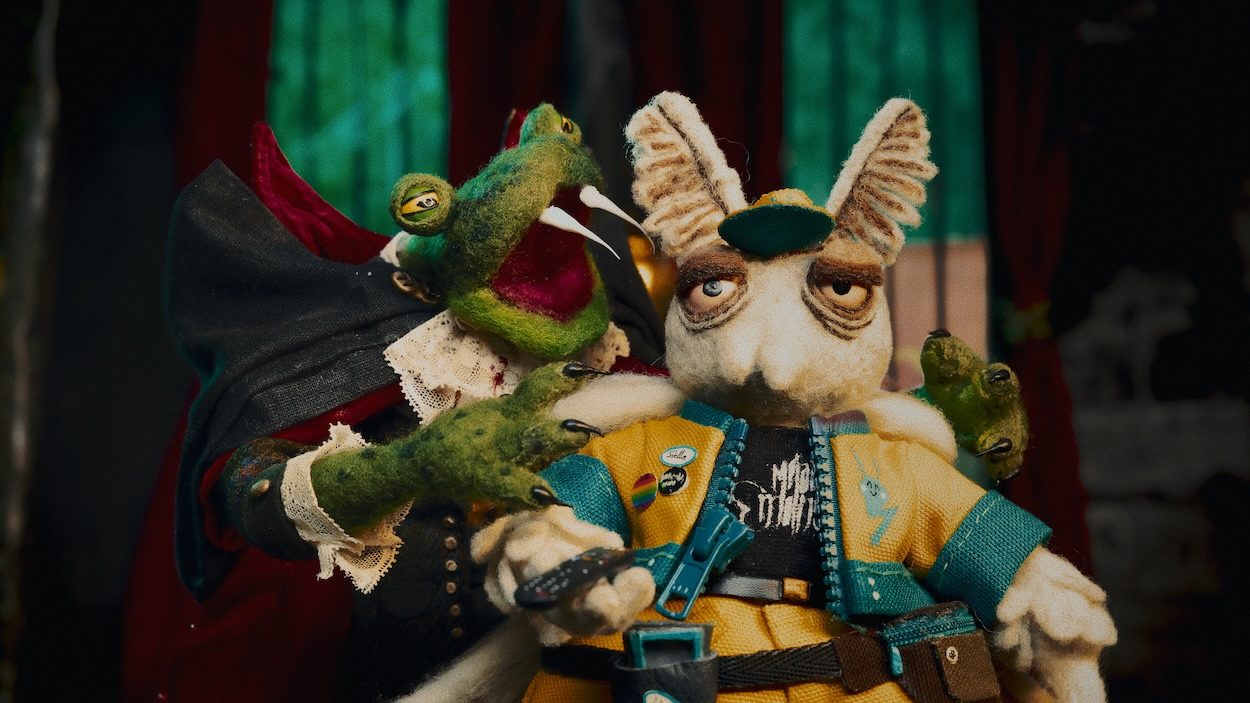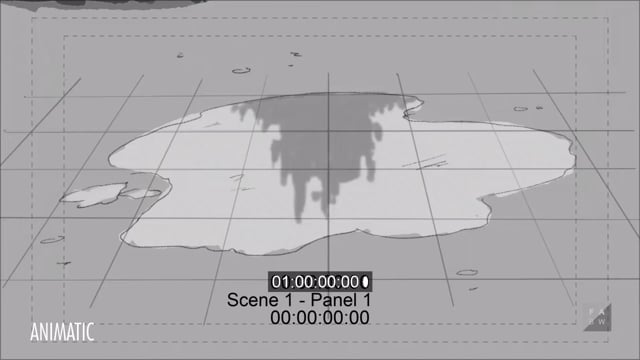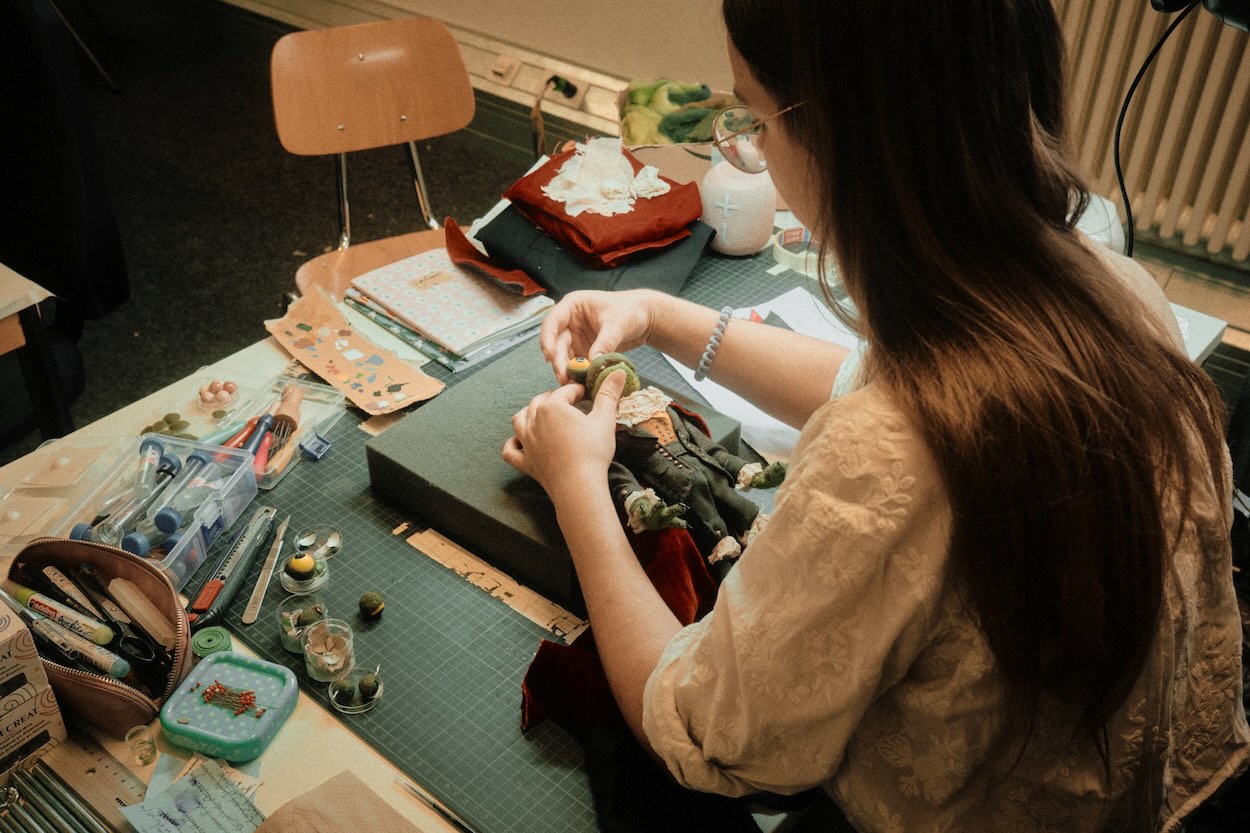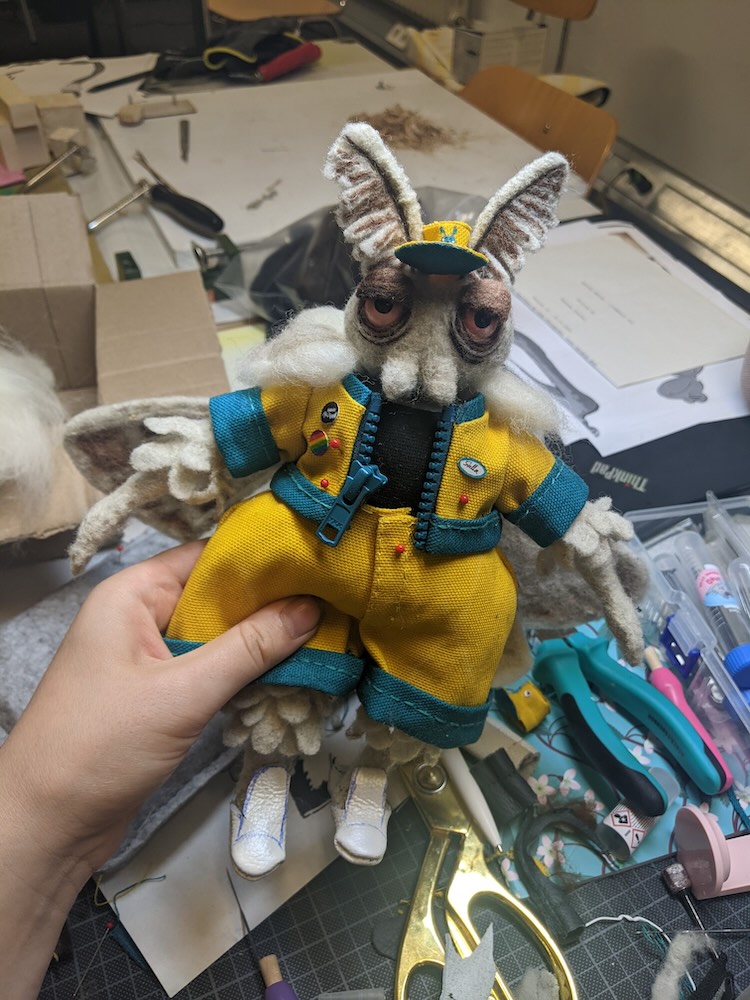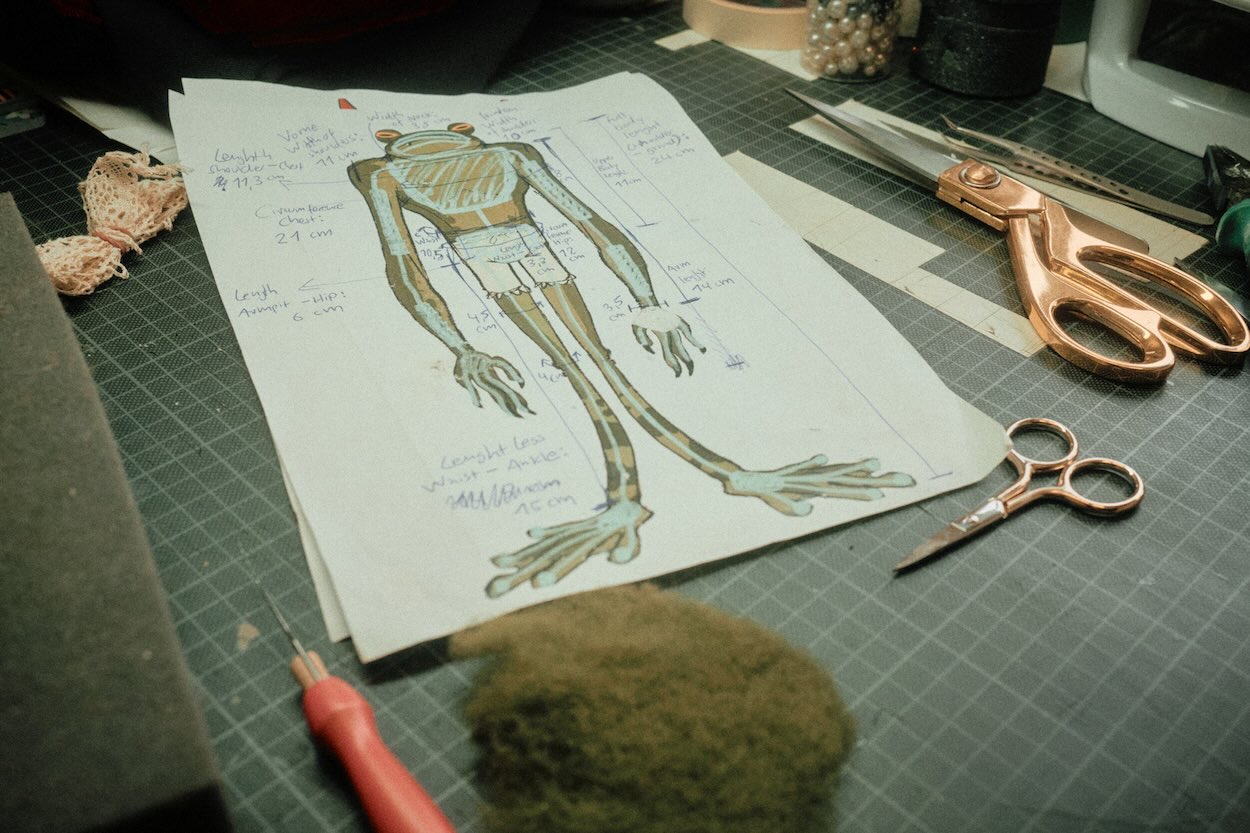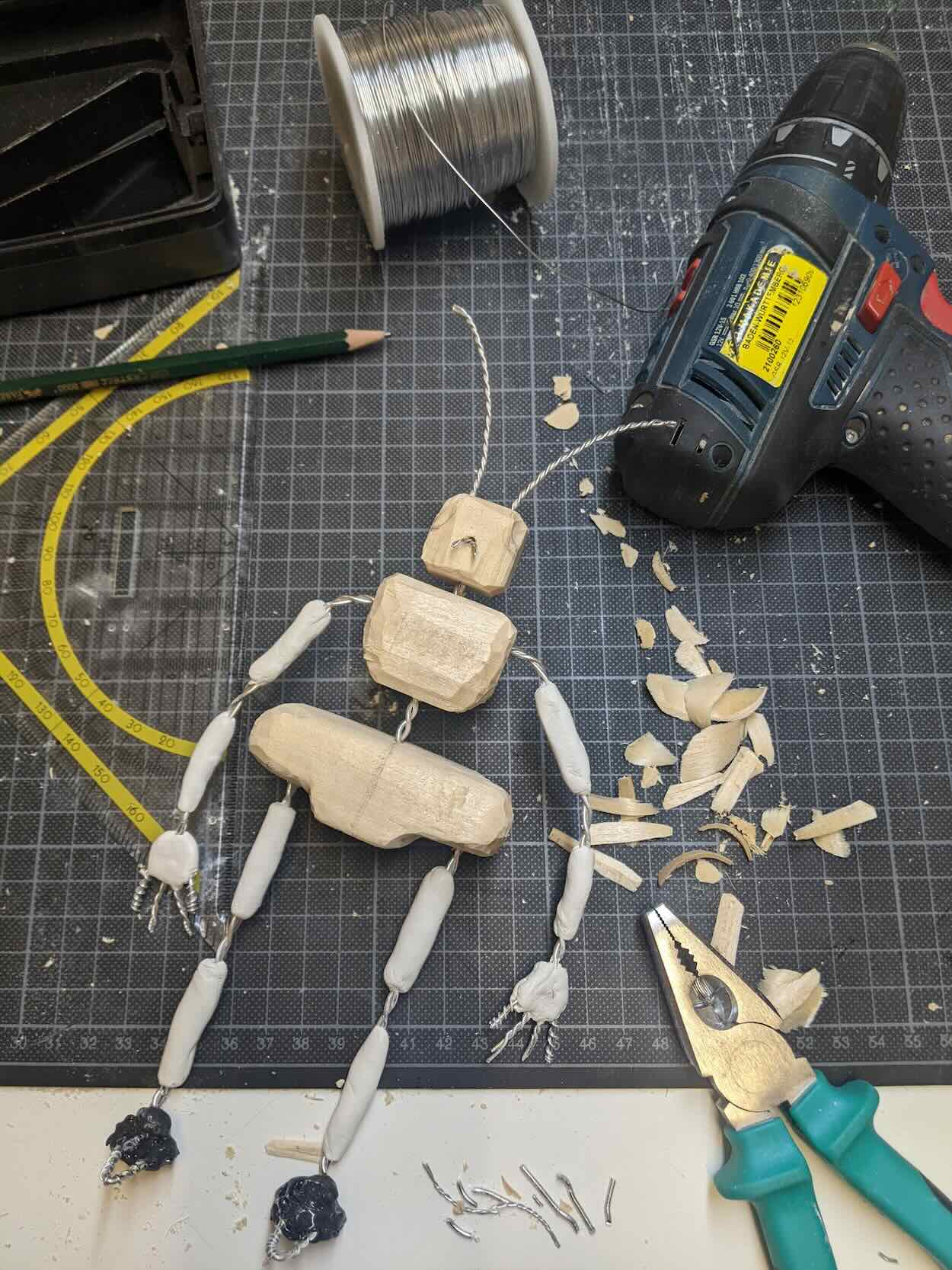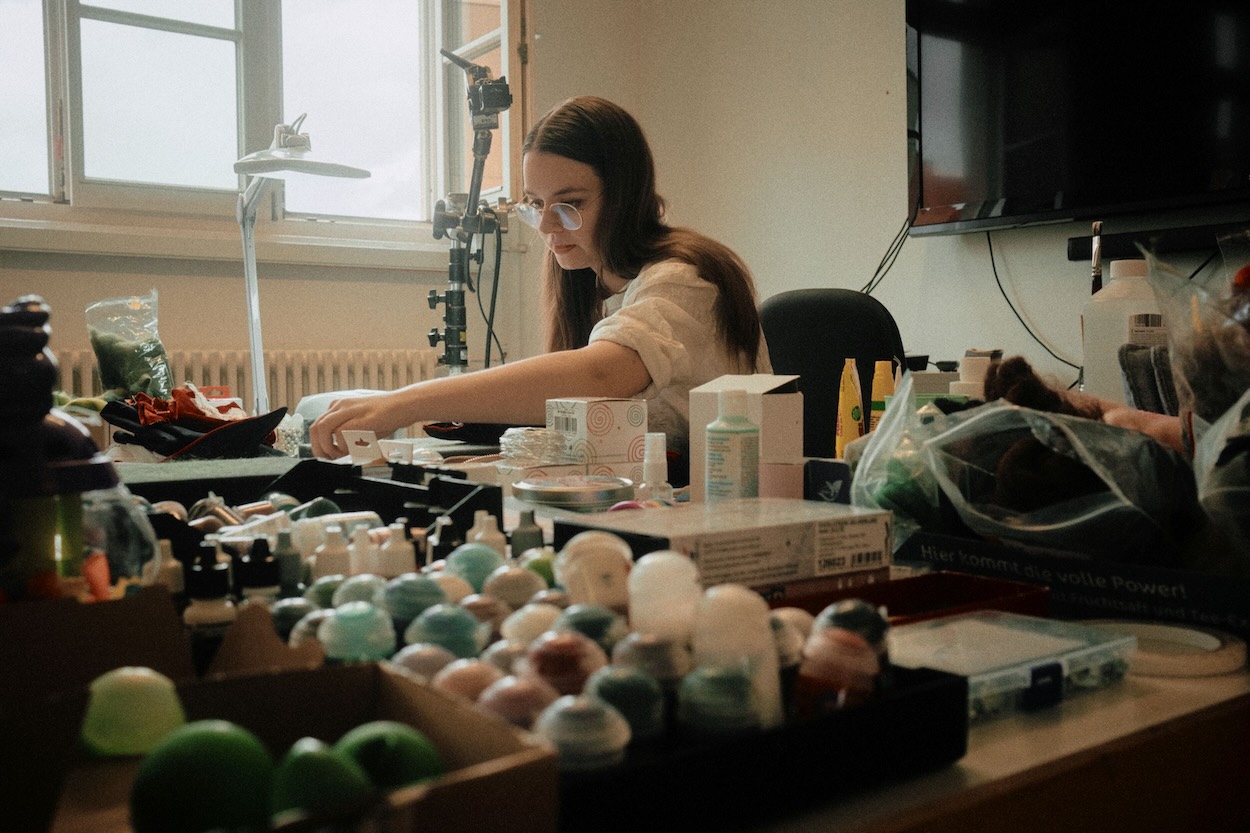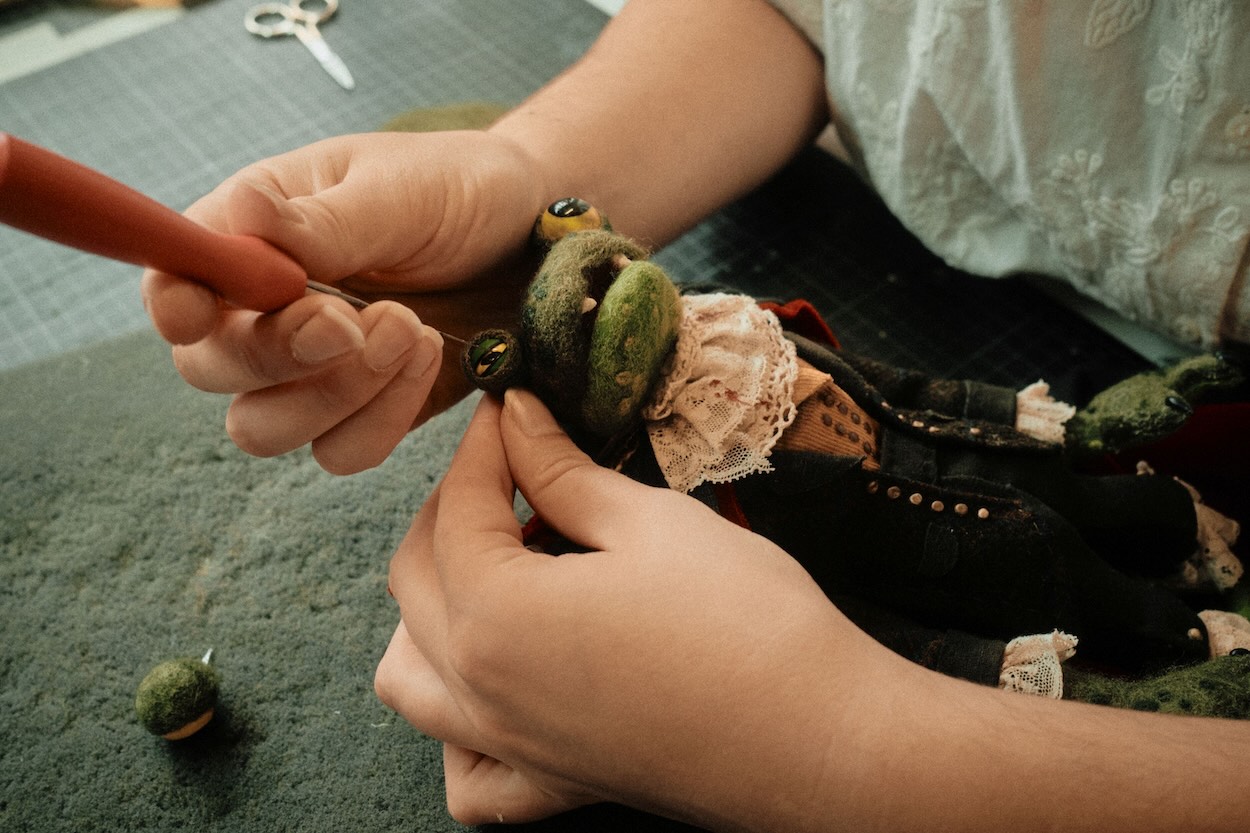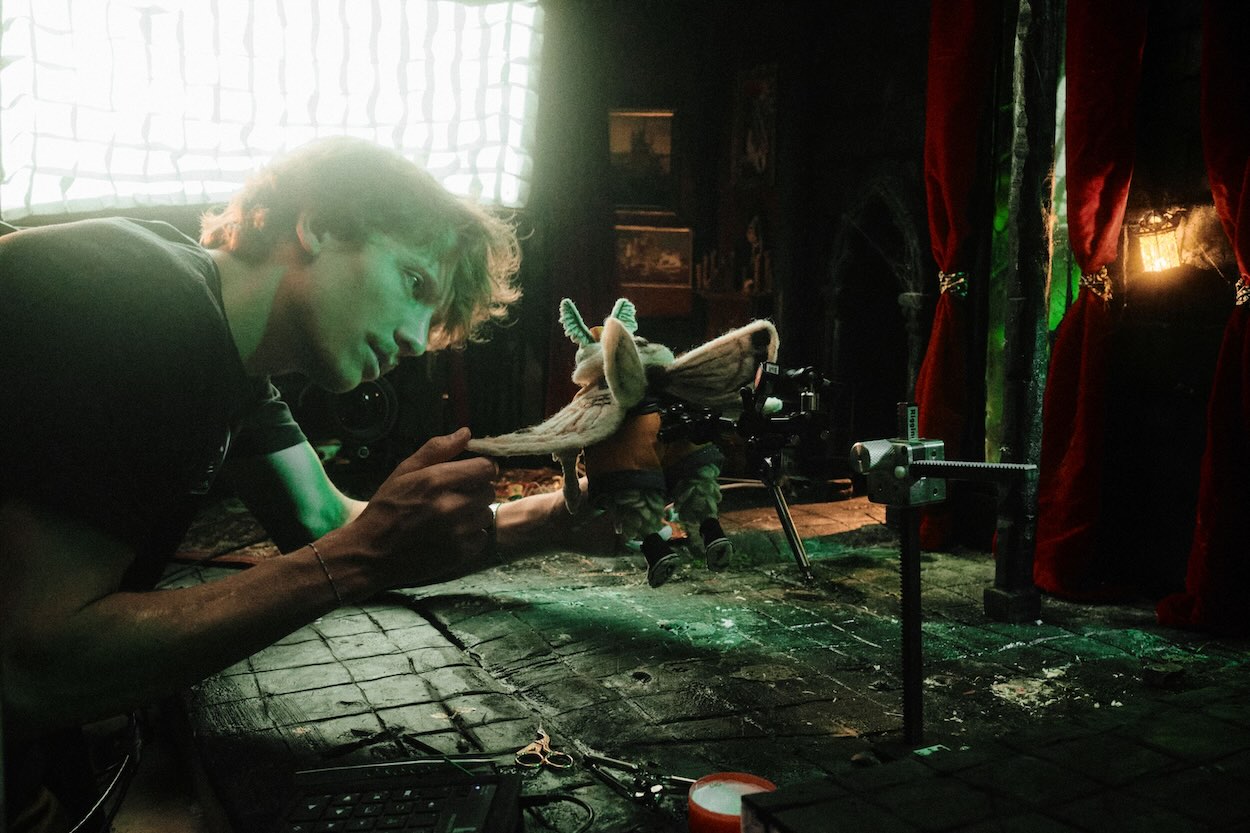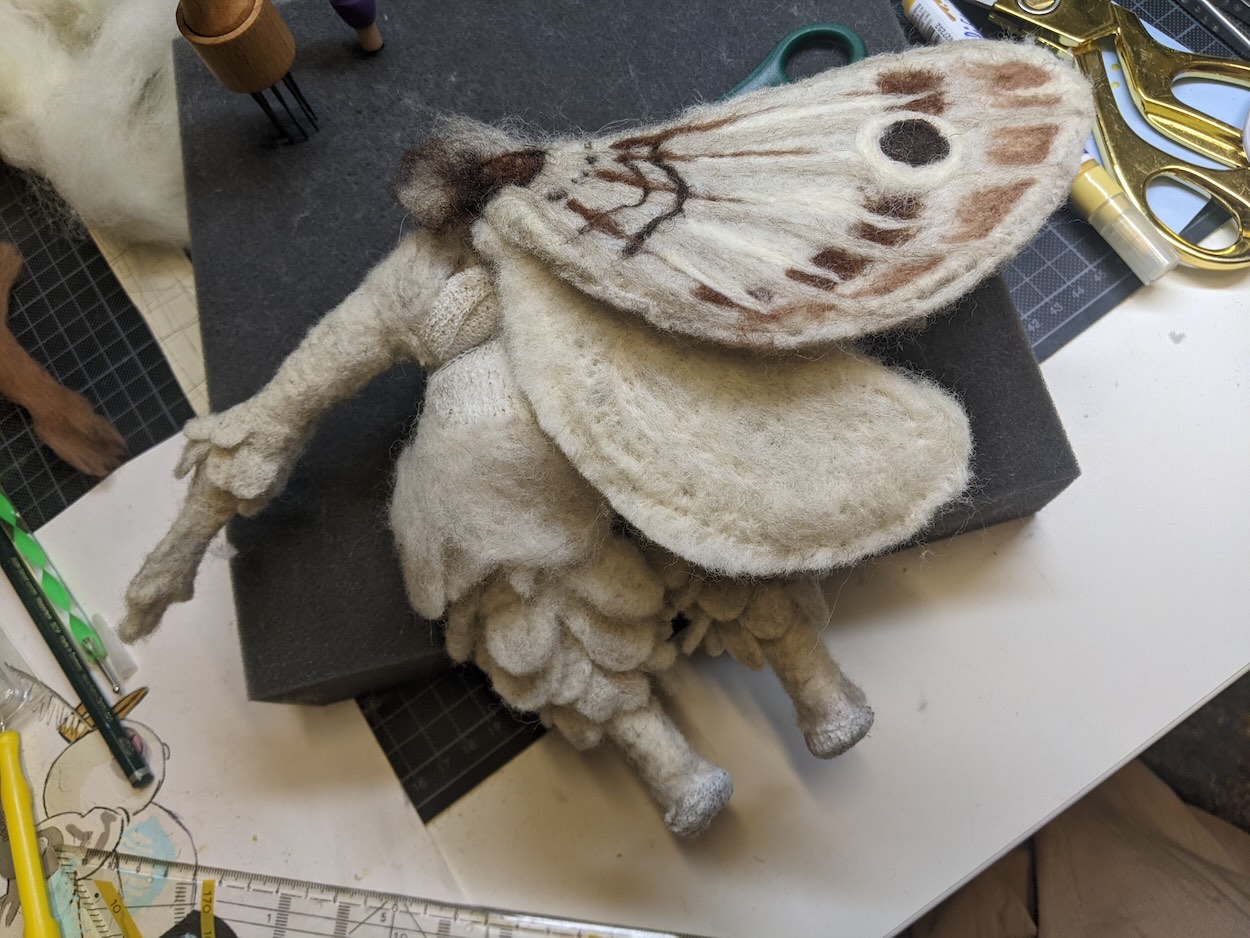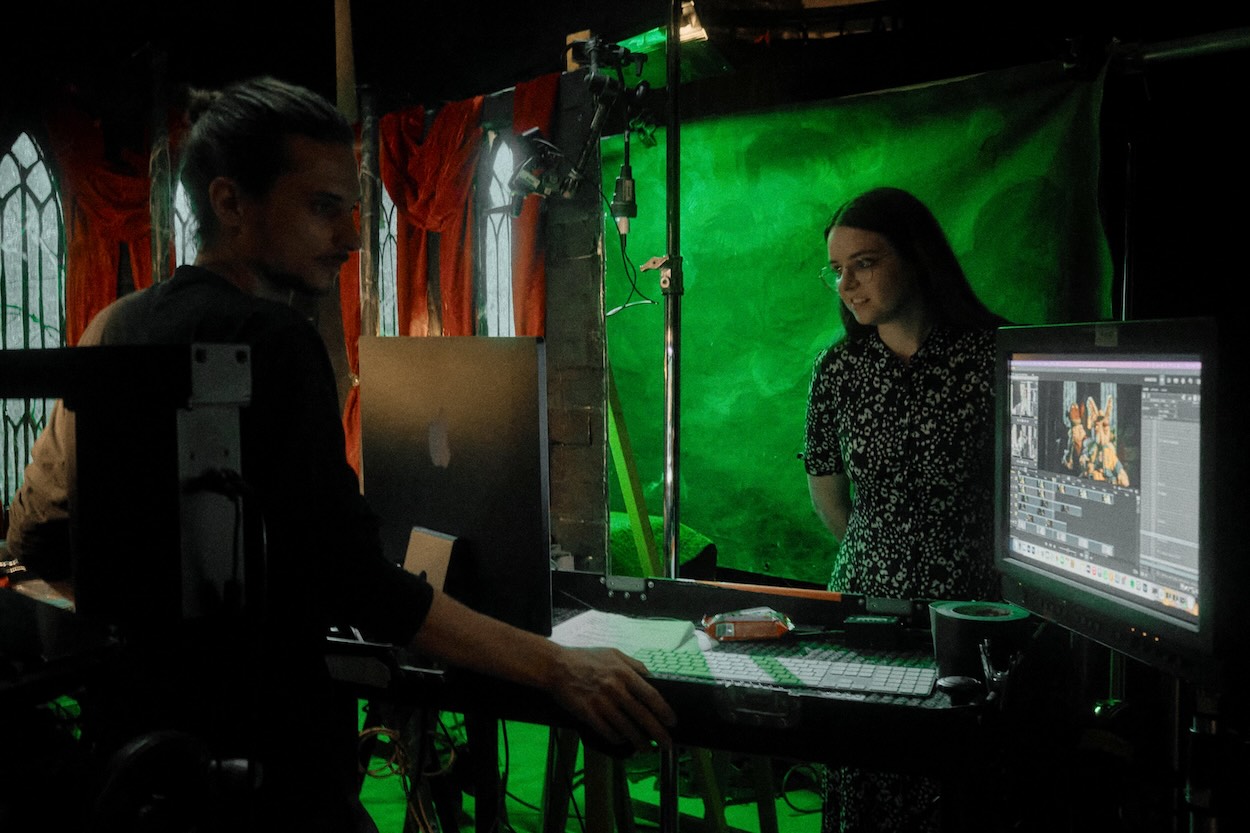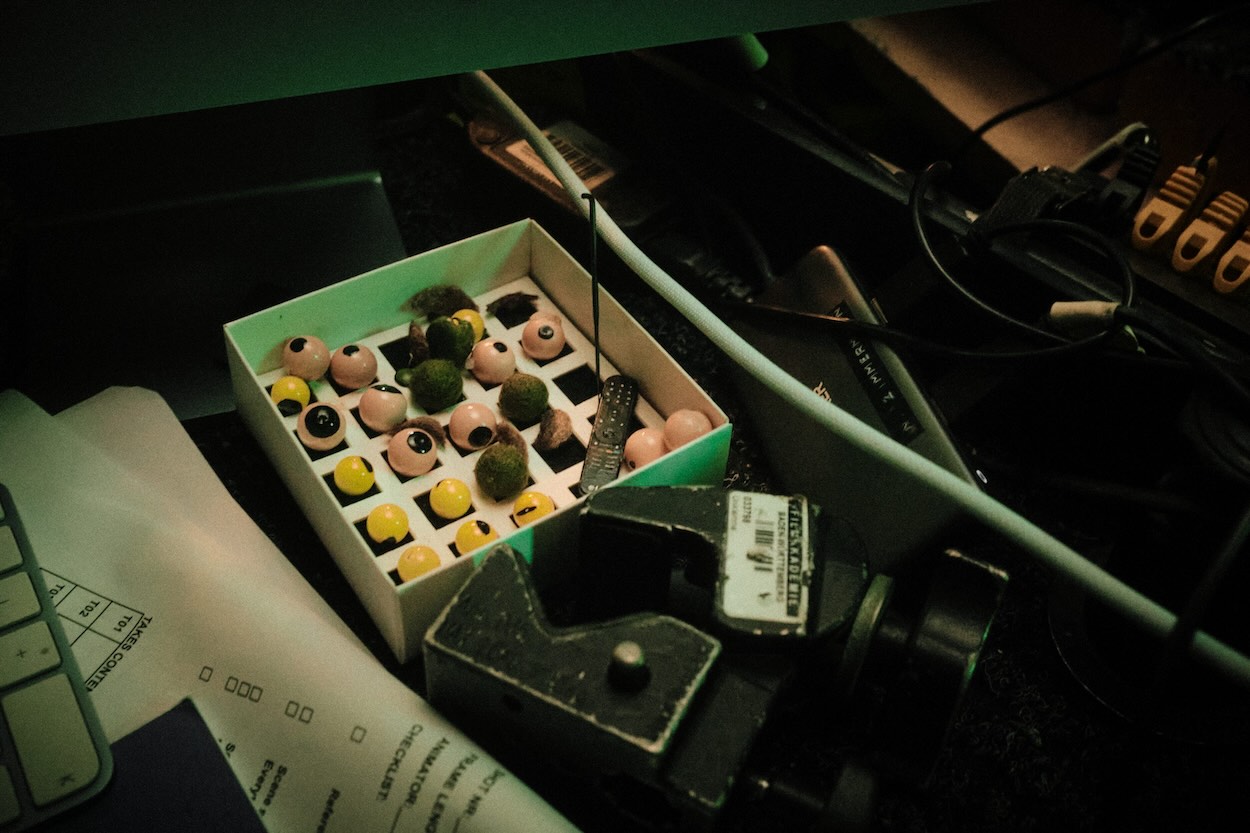Vanessa Stachel delicately mending Mr Frogula
What prompted you to shift from live-action to animation and have you come away with a preference for one or the other genre?
No, I love both! Some stories are better told in live-action, some in animation. I like to be free in choosing the fitting medium and I feel comfortable working in both.
As a kid I was drawing a lot of comics and the first “films” I made were actually animated ones.
I also like to mix both or put motion design or animated elements in live-action films. With animation you can truly explore the magic of filmmaking.
Stop-frame is painstakingly laborious work moving a whisker here and there repeatedly and your film Delivery for Mr. Frogula certainly shows minute attention to teeny tiny details. Please tell us about the process behind making it. Starting with the narrative, how did the idea evolve and was every detail sketched out initially? Did the script change much as you began shooting?
For the narrative: Yes, the story went through many different versions. The first idea was just to have a story about a human-like Vampire-Frog. Simply because I love frogs and vampires and we wanted to do something fun.
In the first story versions it was a couple (a moth and a duck), throwing a Halloween-Party but wanting the most badass party décor to impress the guests. So they get real coffins from a local cemetery but in one there’s a Vampire-Frog! The Vampire-Frog wants to bite the party guests but gets stopped by the super bright OLED-TV showing a nature documentary with a sunrise.
We liked that but wanted to go a bit bolder and thought a vampire castle would make a cooler location – and in animation that’s more doable than in live-action – so the TV had to be delivered to Count Frogula’s place…
Yes, the film has many teeny tiny details. We really fell in love with our characters and had many fun additional ideas while planning the film.
The script didn’t change any more once we started shooting. For stop-motion you have to plan precisely beforehand. The voice recording and the edit (as an animatic) were done previous to the shoot. But some new ideas for details in the set design were added along the way.
How were the characters crafted? And what was your process for getting the right body language when shooting stop-frame?
The idea was to have very contrasting characters: Count Frogula is super snobbish and sneaky. Stella the moth on the other hand is a very straightforward person who holds nothing back. Our character designer Sascha May did the designs based on the script and character descriptions and once those were final we crafted the puppets ourselves from aluminium wire, wood, foam and wool felt.
We had nine animators on the project, so it was an important task to have a consistent body language of each Stella and Frogula. For almost every shot I recorded a video of myself acting on the pre-recorded voice acting. Every morning when our animators came in, I discussed the planned shot and my acting suggestion with them. Often our animators also had their own ideas for the movements, and we mixed that in when it was fitting the characters.
Where did you build the set?
We shot during the summer vacation time of 2023 so we could use our smallest film school studio for six weeks straight. It was really nice to have everything on the campus and the core team was really close all of this time. I was able to work on the puppets in a classroom and when I was needed on set, I could walk there in two minutes.
Tell us about the team work – how it came together and what was the daily schedule like?
We started our lovely team with producer Nadia Zimmermann and creative producer Luca Merkle (the three of us already worked together on three film school projects before Frogula – also on Lady Painmaker) and then got Benedict Uphoff as DoP and Jack Yevhen Baratov as producer on board. As the core team we reached out to our other team members and our pitch about the Vampire-Frog really worked and sparked some joy, so we found many students and others joining us.
In the six weeks of the shoot the schedule was that Benedict and I met in the morning on set, preparing the shot of the day. Benedict got the camera, the lights and the stop motion software ready. I was positioning the puppets. After that our animators came in (mostly a team of two). I discussed the shot with them and then went to my “puppet office” working or doing touch ups and repairs on the puppet that wasn’t shooting or met with our producers or our production designer Charlotte Lanfranca who was, parallel to the shoot, preparing the next sets. From time to time I stopped by the studio to annoy the animators (hopefully not too much). And in the evening, we usually checked out the finished shot of the day and it was so exciting every time, to see how it turned out.
Does it take a crazy amount of time shooting the stop-frame? Is there a certain point when you stop for the day or should I say night?
Yes, it takes a crazy amount of time! We mostly planned one shot per day which worked out in most cases. But some shots, like the one where Stella walks in the castle, looking for Frogula, took three days. Animating the walk cycle of a character is so much work!
If you pause a shot and continue the next day there is always the danger that something will move overnight or that something with the light changes. I think there was always some minor stuff happening, when it was a shot stretched over more than one day, but we got it fixed on set (or in post :P).
What were the main challenges of the whole production? And how did you resolve them?
First of all, convincing our film school that we can pull off the project was the major challenge. And after we got greenlighted, actually pulling it off in the timeframe we planned it.
We could have the studio, camera and lights only for a limited time, so we had to make it work.
(And it did work!) But we also had some nights with little or no sleep and some of us were almost living on campus.
All of us really loved the story and the characters, having a strong and dedicated team and a good communication made it work out!
You’re still a student at Filmakademie Baden-Württemberg. What are you currently working on and what are your ambitions for the future?
Yes, I’m still a student and will most likely graduate in 2026. So I have some more film school projects ahead of me. For my diploma I want to do another spec spot and perhaps a short film and I started developing different ideas.
For the future I would love to take foot in the advertising industry and direct commercials, so I’m slowly starting to reach out. The success we had with Frogula so far on festivals really feels like a door opener and I’m super grateful for that! I am curious and excited to see where my journey will take me.
Also I still have a big love for the longer fiction formats like series and might try to work a bit into this direction.
INFO:
See other winners from the Young Director Awards here
Vanessa Stachel website
@motlok
@nadia_zimmermann_
@benedictuphoff
@filmakademie_bw
